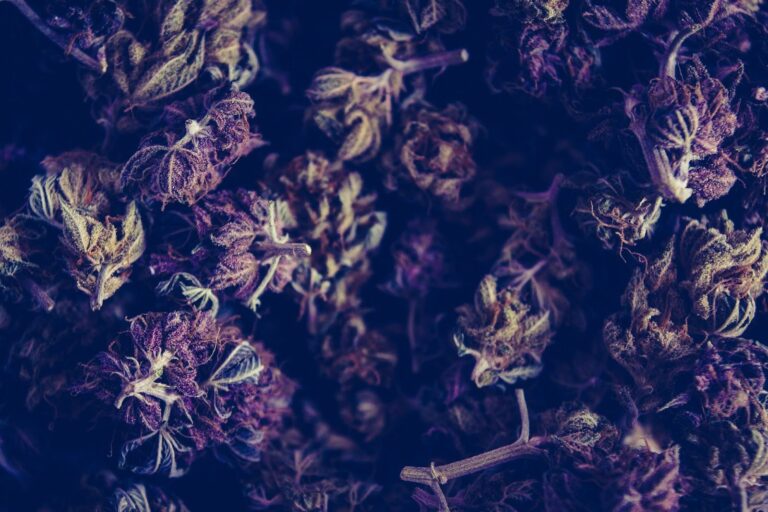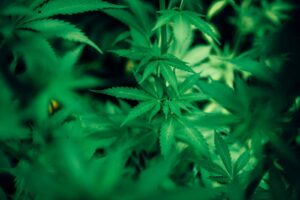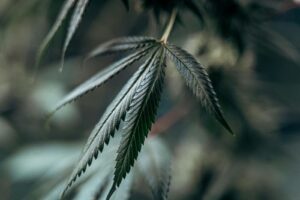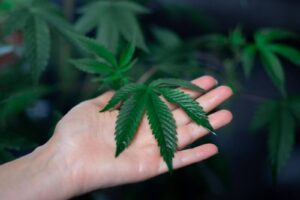Ever picked up a bud that crumbled to dust or refused to light? That’s moisture content at play—one of the most critical factors affecting cannabis quality, potency, and safety If your moisture levels are low, you risk contamination, product degradation, and an overall poor experience.
Moisture content affects not just the usability of your cannabis but also its potency, aroma, and safety. Too much moisture encourages mold and bacterial growth, while overly dry cannabis loses cannabinoids and terpenes, making it less effective and less enjoyable to consume. Finding the right balance is crucial for both consumers and producers.
Understanding and controlling moisture content ensures that your cannabis retains its potency, flavor, and overall usability. This article will explore why moisture content matters, how it affects product quality, and the risks of improper moisture levels. You’ll also learn about ideal moisture ranges, different methods for measuring moisture, the role of water activity, and the best drying practices.
What Is Moisture Content?
Moisture content refers to the total amount of water present in cannabis. This measurement is essential for determining the overall quality and stability of the product. However, it is distinct from water activity, which measures how much water is available for microbial growth. While both factors influence product longevity, moisture content directly affects texture, combustion, and weight.
A sample with high moisture content does not necessarily mean it is at high risk for microbial contamination. The real concern is how much of that moisture is accessible to microorganisms.
Without proper control, cannabis can either degrade too quickly or become a breeding ground for mold and bacteria, impacting both safety and user experience.
Now, let us understand the importance of moisture in dried cannabis.
Importance of Moisture Content in Dried Cannabis
Maintaining the right moisture content in dried cannabis is essential for preserving its potency, flavor, and overall usability. The ideal moisture content falls between 6% and 15%, but the optimal range is narrower, between 6% and 9%. Staying within these limits ensures that cannabinoids and terpenes remain intact while minimizing microbial risks. Here’s what you need to know:
- Target Moisture Content: Dried cannabis should contain 10-12% moisture. Anything higher risks mold growth, while lower levels can degrade terpenes and cannabinoids.
- Water Activity (aw): Maintain water activity between 0.55 and 0.65. This range prevents microbial growth while preserving freshness and potency.
- Effects of Excess Moisture: High moisture leads to mold, bacterial contamination, and failed lab tests, making your product unsellable.
- Effects of Low Moisture: Overly dry cannabis loses terpenes, burns harshly, and degrades cannabinoids faster, reducing overall quality.
- Proper Monitoring: Use water activity meters and moisture analyzers to check levels during drying, curing, and storage, ensuring optimal moisture to prevent mold and degradation. PlanaCan simplifies moisture monitoring by consolidating real-time data on drying and curing conditions. By consolidating insights in one place, you can connect decisions to real results, refining methods for higher yields and bigger profits.
- Storage Best Practices: Store cannabis in airtight, humidity-controlled containers to maintain ideal moisture levels and prevent fluctuations.
Now, let us discuss the methods used to measure moisture content in cannabis.
Methods for Measuring Moisture Content In Cannabis
Accurate moisture measurement is crucial to maintaining the quality, potency, and safety of your cannabis. Too much moisture can lead to mold and microbial growth, while too little can degrade terpenes and cannabinoids, reducing overall product effectiveness. Proper testing also helps ensure compliance with industry regulations and consistency across batches.
Here are the most common methods used to measure moisture content in cannabis:
1. Loss-on-Drying (LOD) Method
This standard lab technique involves heating a cannabis sample to evaporate moisture and measuring the weight difference. While reliable and widely used, this method requires specialized equipment and can be time-consuming, making it best suited for lab environments rather than quick field testing.
2. Karl Fischer Titration
Karl Fischer titration is one of the most accurate methods for measuring moisture precisely. This chemical analysis determines water content at a molecular level, providing exact data. However, it’s a complex and costly process that requires trained personnel and is primarily used in advanced lab settings.
3. Water Activity Meters
Unlike other methods that measure total moisture, water activity meters assess how much water is available for microbial growth. This measurement is critical for determining product stability and shelf life. To ensure your cannabis stays fresh and safe over time, monitoring water activity is just as important as measuring overall moisture content.
4. Infrared (IR) Moisture Analyzers
For a fast and non-destructive testing option, infrared moisture analyzers use IR radiation to measure moisture content within seconds. These devices are convenient for quick checks during processing, but they may not be as precise as more advanced lab methods.
5. Capacitance and Conductivity Meters
Handheld moisture meters use electrical properties to estimate moisture levels in cannabis. These devices are easy to use and provide immediate readings, making them popular for growers and processors. However, they may not always be as accurate as lab-based methods, so using them alongside other testing techniques is best.
6. Oven-Drying Method
This traditional method involves heating cannabis at a set temperature for a specific duration to remove moisture and determine content by weight loss. While effective, it can degrade cannabinoids and terpenes due to prolonged heat exposure, making it less ideal for preserving product quality.
So, how is a moisture meter related to moisture content? Let us understand.
Water Activity and Its Relationship to Cannabis Moisture Content
Understanding water activity (aᵥ) is crucial for maintaining cannabis quality, safety, and compliance. While moisture content measures the total water in a product, water activity reflects how much water is available for microbial growth. Managing aᵥ properly ensures shelf stability, potency, and consumer safety.
- Water Activity Meters: Moisture content alone doesn’t indicate microbial risk—water activity does. Meters provide precise readings to help maintain stable conditions and prevent mold or terpene loss.
- Drying and Curing: Proper drying reduces excess moisture, while stable curing conditions keep aᵥ levels safe. Fluctuations in humidity can lead to microbial growth or terpene degradation.
- Packaging: Airtight, moisture-resistant packaging prevents shifts in aᵥ that can cause mold growth or potency loss. Proper sealing helps maintain freshness and quality.
- Storage: Even after packaging, temperature and humidity affect water activity. Climate-controlled storage prevents fluctuations that could degrade cannabinoids and terpenes.
- Compliance: Many regulations set strict water activity limits to prevent contamination. Routine testing ensures compliance and reduces the risk of recalls.
- Shelf Life and Quality: Managing aᵥ properly protects terpenes, cannabinoids, and potency. Uncontrolled levels can lead to degradation, affecting product flavor, aroma, and effectiveness.
- Testing Frequency: Regular testing during drying, curing, and storage ensures stable water activity, helping you catch fluctuations early to prevent quality issues and loss. PlanaCan provides a visual timeline for planning and tracking tasks, making it easier to plan while managing daily activities. The calendar lets you adjust tasks and centralize information so everyone knows what needs to be done and no task is overlooked.
While moisture content tells you how much water is in cannabis, water activity determines microbial risk. A high Aw level means mold and bacteria can thrive—even if total moisture content seems low. This table breaks down the key differences:
Factor | Moisture Content | Water Activity (Aw) |
Definition | Total water in cannabis by weight (%) | Available moisture for microbial growth |
Impact on | Weight, texture, usability | Safety, shelf life, microbial growth |
Microbial Risk | Does not directly indicate contamination risk | High Aw can promote mold and bacteria growth |
Effect on Quality | Affects texture, burn rate, and processing | Influences terpene/cannabinoid preservation |
Testing Method | Measured by weight loss techniques | Measured with specialized water activity meters |
Storage Considerations | Helps determine drying/curing effectiveness | Must remain low to ensure long-term stability |
Now, let us understand how to dry your cannabis properly to achieve an ideal level of moisture content in your cannabis.
Cannabis Drying Processes to Achieve Optimal Moisture Content
Dialling in the right drying process is crucial for preserving potency, flavor, and overall product quality. Too fast, and you risk terpene loss and harsh smoke; too slow, mold becomes a threat. By carefully controlling temperature, humidity, and airflow, you can ensure a smooth, even dryness that sets the stage for a perfect cure. Here’s how to do it right:
1. Control Temperature and Humidity
- Keep drying room temperatures between 60-70°F (15-21°C) to prevent terpene loss.
- Maintain humidity levels around 45-55% to allow for gradual drying without terpene loss or mold risk.
- In high-humidity environments, dehumidifiers help prevent mold, while humidifiers can slow moisture loss in dry climates.
2. Optimize Airflow
- Use gentle, indirect airflow to prevent moisture pockets.
- Avoid excessive air movement, which can dry the outer layers too quickly while trapping moisture inside.
3. Choose the Right Drying Method
- Hang drying (whole plants or branches) slows moisture loss for a smoother cure.
- Rack drying (individual buds on trays) speeds up the process but requires careful humidity control to prevent overdrying.
4. Monitor Moisture Content and Water Activity
- Use moisture meters to track progress—ideal moisture content for curing is around 10-12%.
- Water activity should be below 0.65 to prevent mold while maintaining freshness.
- Check for stems snapping cleanly rather than bending to gauge readiness.
5. Optimize Drying Time Based on Bud Size
- Large, dense buds take longer to dry and may need extra spacing to prevent moisture buildup.
- Small, airy buds dry faster and should be monitored to avoid overdrying.
6. Consider Cold Curing for Higher Quality
- Lower drying temperatures (around 55-60°F) help preserve terpenes and cannabinoids.
- This process takes longer but enhances flavor, aroma, and smoothness.
7. Post-Drying Conditioning
- Before curing, burp drying bins or bags to ensure even moisture distribution.
- Let buds sit in a controlled environment for 12-24 hours before sealing for curing.
8. Avoid Common Mistakes
- Too fast: Harsh smoke, loss of terpenes, and chlorophyll retention.
- Too slow: Increased risk of mold and microbial contamination.
Tip: Using humidity-controlled rooms or drying chambers ensures stable conditions, allowing your cannabis to dry slowly and evenly. This reduces the risk of mold or overly dry, brittle buds. PlanaCan provides a visual timeline for planning and tracking tasks, helping you plan and manage daily activities. The calendar feature lets you adjust tasks, centralizing information so everyone stays aligned and no task is overlooked.
So, what challenges and standards arise while measuring moisture in cannabis? Let us find out.
Challenges and Standards in Cannabis Moisture Measurement
Precise measurement and control are essential to maintaining quality and meeting industry standards. Here are some of the common challenges in measuring moisture in cannabis:
- Inconsistent Readings: Traditional moisture meters can be unreliable, especially with dense buds. Water activity meters provide a more accurate measure of product stability.
- Mold and Contamination Risks: Excess moisture encourages microbial growth, while overly dry cannabis loses cannabinoids and terpenes. Striking the right balance is key.
- Drying and Curing Variability: Different strains and bud densities dry at different rates, making uniform moisture control difficult. Without proper monitoring, you risk overdrying or leaving excess moisture.
- Environmental Factors: Even after packaging, fluctuations in temperature and humidity during storage or transport can impact moisture levels.
- Equipment Calibration: Moisture and water activity meters require regular calibration to maintain accuracy. Inconsistent calibration can lead to misleading results.
- Batch Variability: Even within the same strain, moisture content can vary from batch to batch due to differences in cultivation, drying, and curing techniques.
Industry Standards and Best Practices
To produce high-quality, compliant cannabis, you need to follow strict moisture control standards. Proper testing, drying, curing, and packaging help maintain stability, preserve potency, and prevent contamination. Here are the key industry best practices to ensure consistency and compliance.
- Water Activity Testing: Instead of relying on moisture content alone, use water activity meters to gauge microbial safety and long-term stability.
- Target Moisture Levels: Most cannabis should maintain a moisture content of 10-12% and a water activity below 0.65 Aw to prevent mold while preserving quality.
- Controlled Drying and Curing: Slow, consistent drying (at 60-65% RH) and proper curing help stabilize moisture levels and enhance product longevity.
- Regular Monitoring: Test moisture levels at multiple stages—post-harvest, after curing, and before packaging—to ensure consistency.
- Data Tracking and Analysis: Logging moisture levels over time helps you optimize drying and curing processes. PlanaCan generates detailed reports for each harvest, capturing your cultivation data and its impact on yield. Organized in one location, it makes it easier for you to analyze trends, pinpoint successful methods, avoid past mistakes, and refine your processes for higher yields and better profitability.
- Packaging Innovations: Using humidity control packs or specialized packaging films helps maintain consistent moisture levels after packaging.
- Lab Verification: Periodic third-party lab testing ensures your internal moisture measurements align with regulatory standards.
Conclusion
Moisture content is key to cannabis quality, directly impacting stability, safety, and potency. Keeping it within the ideal range requires precise moisture meter measurements and water activity assessments. By following standardized practices, you can ensure consistency, improve product reliability, and deliver the best possible experience to consumers.
PlanaCan provides advanced cultivation tools designed for efficiency, helping you maximize yields and streamline your grow operation. Using customizable templates, you can define and automate key processes, ensuring a consistent workflow from seed to harvest. A clear visual timeline keeps everything organized by letting you schedule tasks, track progress, and make real-time adjustments.
By centralizing essential information, PlanaCan prevents oversights, reduces errors, and keeps your team aligned. With built-in automation and data tracking, you can optimize resources, maintain ideal growing conditions, and improve crop quality, whether you run a small or large facility.
Using PlanaCan’s powerful features, you can optimize crop conditions, boost productivity, and confidently maintain quality. Schedule a free call today to see how PlanaCan can transform your growth operation.




